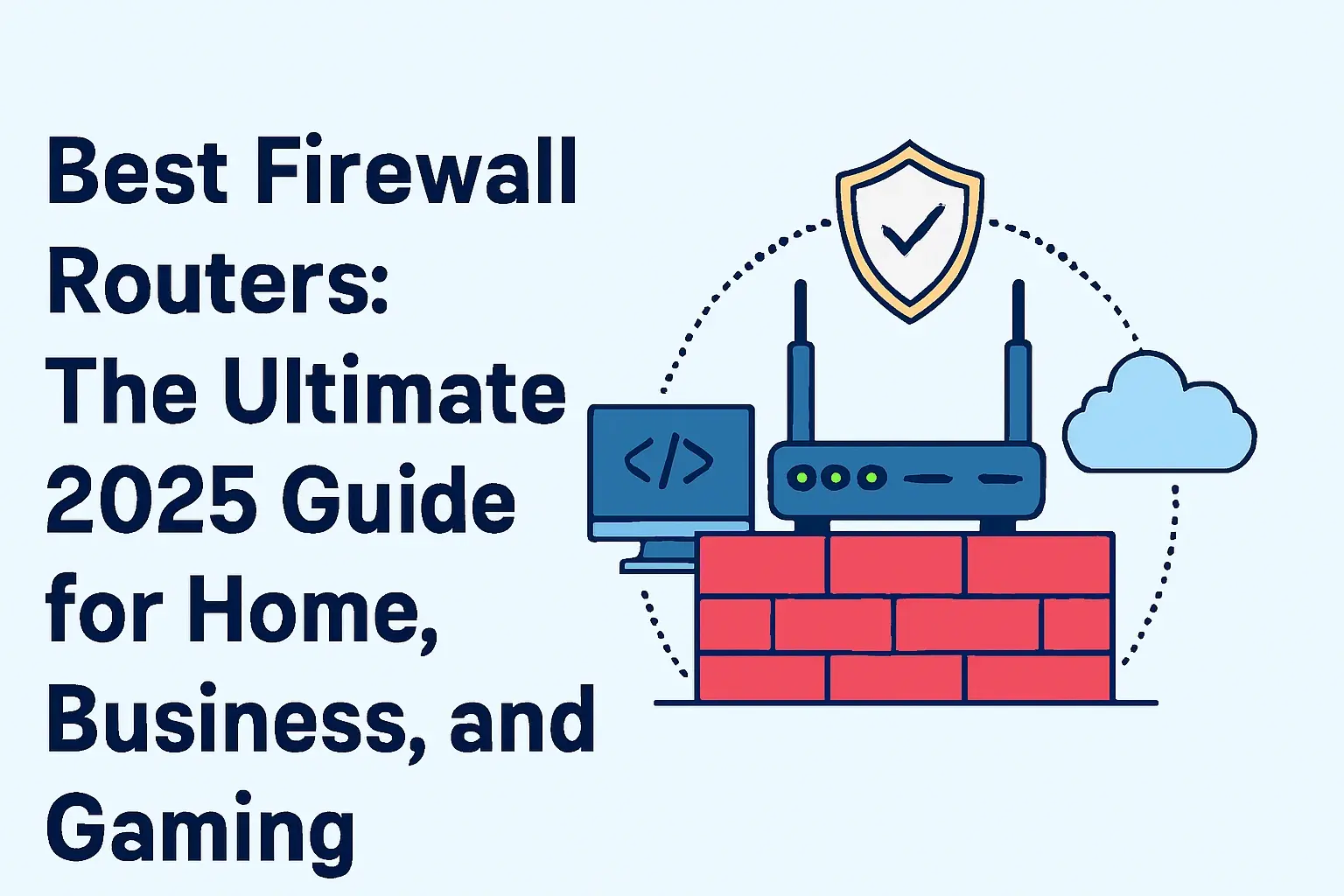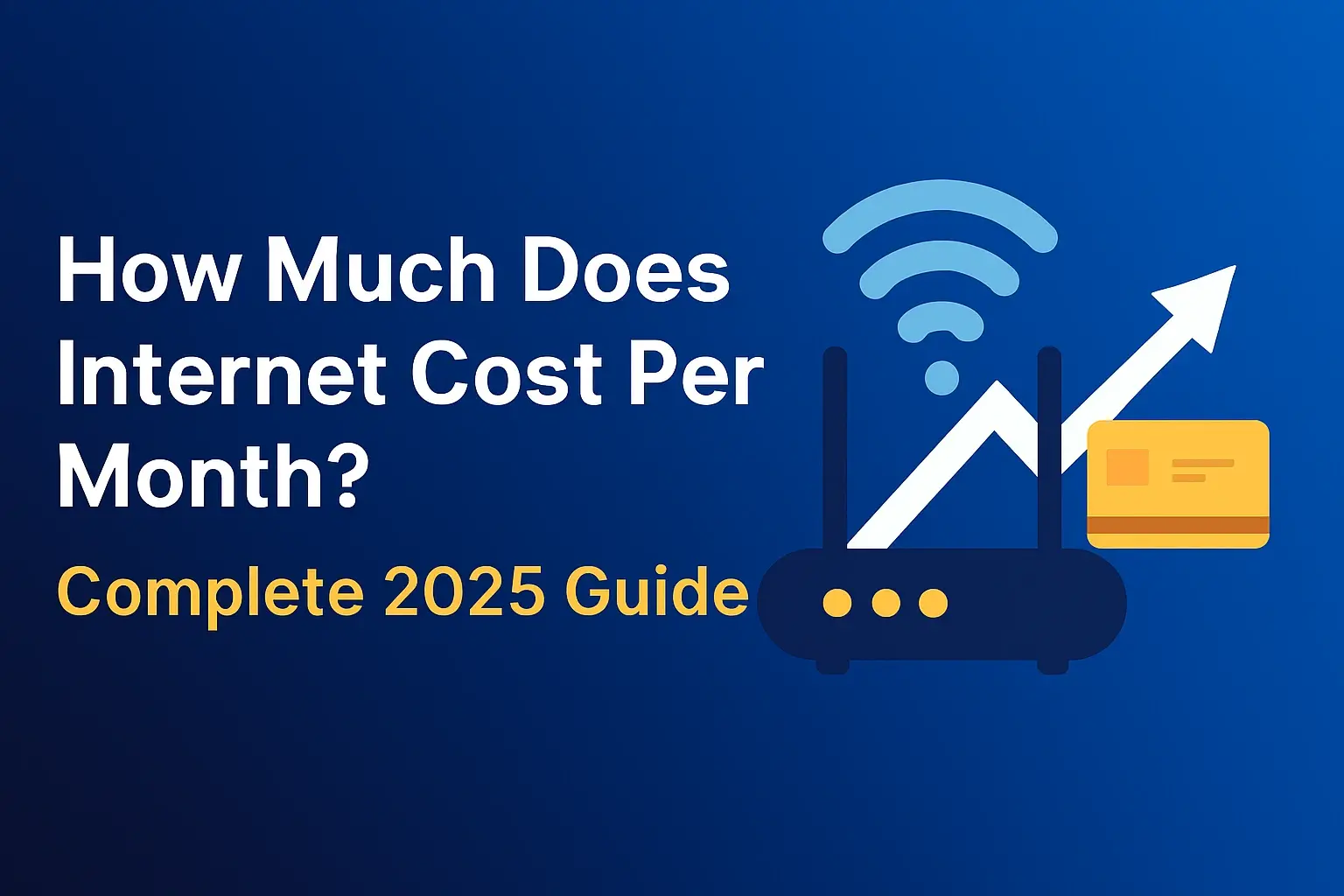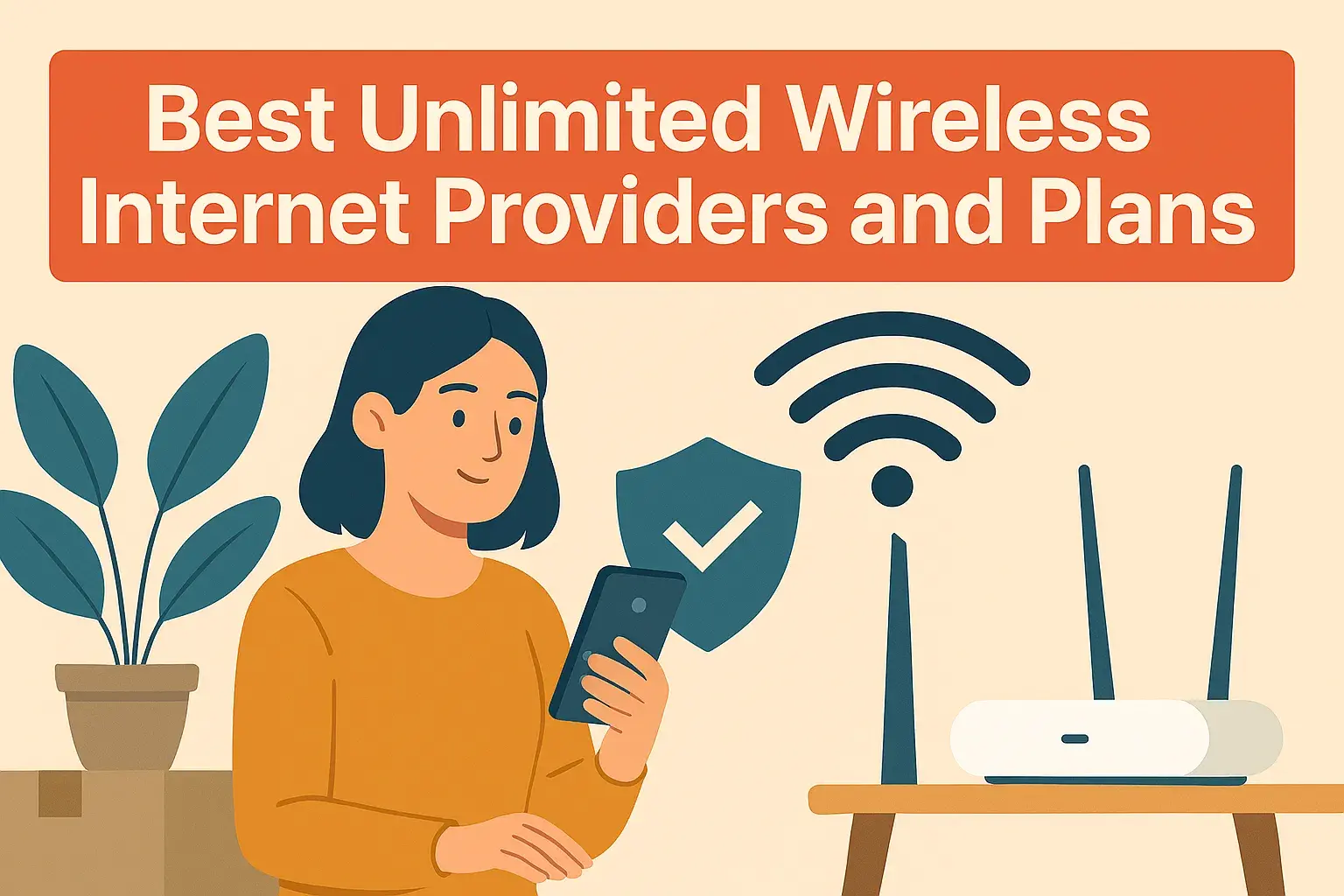
Understanding Your Needs
Choosing the right internet provider for your home can feel overwhelming with the sheer number of options available. This guide will break down the process, helping you identify your unique requirements and navigate the complexities of internet service to find a plan that perfectly suits your digital lifestyle in 2025.
Assessing Your Household's Internet Usage
Before diving into provider specifics, it's crucial to understand how your household uses the internet. This forms the bedrock of your decision-making process. Think about the number of devices connected simultaneously, the primary activities performed online, and the overall data consumption patterns. Are you a single user who primarily browses and checks email, or do you have a multi-person household with gamers, streamers, remote workers, and students all online at once?
Number of Users and Devices
In 2025, the average household has an ever-increasing number of connected devices. From smartphones and laptops to smart TVs, gaming consoles, smart home devices (thermostats, speakers, security cameras), and even smart appliances, each device consumes bandwidth. A good rule of thumb is to count every device that will be actively connected to the internet at any given time. A household with 2-3 people might have 5-10 devices, while a larger family could easily exceed 15-20 active devices. This number directly influences the required speed and capacity of your internet connection.
Primary Online Activities
The type of activities you engage in online is a significant determinant of your internet needs. Let's break down common activities and their bandwidth requirements:
- Web Browsing and Email: These are generally low-bandwidth activities. Even a basic internet plan can handle these efficiently.
- Social Media: While scrolling through feeds is light, watching videos or live streaming on social platforms requires more bandwidth.
- Video Streaming: This is a major bandwidth consumer.
- Standard Definition (SD) streaming: Around 3-5 Mbps per stream.
- High Definition (HD) streaming: Around 5-8 Mbps per stream.
- 4K Ultra HD streaming: Around 25-50 Mbps per stream.
- Online Gaming: While download speeds are important for game updates, latency (ping) is paramount for a smooth gaming experience. Many online games require a stable connection with at least 10-25 Mbps download speed, but low latency is often more critical than raw speed for competitive play.
- Video Conferencing and Remote Work: High-quality video calls, especially for professional settings, require consistent upload and download speeds. For reliable performance, aim for at least 10-25 Mbps download and 5-10 Mbps upload.
- Large File Downloads/Uploads: For professionals or hobbyists who frequently download or upload large files (e.g., video editors, photographers), higher download and upload speeds are essential.
Data Consumption Habits
Data caps are still a reality for some internet plans, particularly satellite and some fixed wireless services. Even with unlimited plans, understanding your typical data usage helps in selecting the right tier. Heavy streamers, gamers downloading large titles, and those frequently uploading video content can easily consume hundreds of gigabytes per month. In 2025, many households are exceeding 500GB to over 1TB of data usage monthly. If your provider has data caps, exceeding them can result in throttling (reduced speeds) or additional charges, which can be costly.
Determining Your Speed Requirements
Based on your usage assessment, you can now translate those needs into specific speed requirements. Internet speeds are typically measured in megabits per second (Mbps) for downloads and uploads.
Download Speeds
Download speed is what most people think of when they hear "internet speed." It dictates how quickly you can receive data from the internet, impacting streaming, browsing, and downloading. For a single user with basic needs, 25-50 Mbps might suffice. However, for a typical 2025 household with multiple users and devices engaging in streaming and gaming, 100-300 Mbps is often recommended. Power users who frequently download large files or stream 4K content on multiple devices might need 500 Mbps or even gigabit (1000 Mbps) speeds.
Upload Speeds
Upload speed is equally important, especially for activities like video conferencing, live streaming, cloud backups, and uploading large files. Traditionally, upload speeds have been significantly lower than download speeds for many technologies (like DSL and cable). However, with the rise of remote work and content creation, upload speeds are becoming increasingly critical. For basic use, 5-10 Mbps upload is usually fine. For remote work and consistent video calls, aim for 10-25 Mbps upload. For content creators or those who frequently upload large files, higher symmetrical speeds (where upload and download speeds are the same) are ideal, often found with fiber optic connections.
Internet Technology Options
Understanding the different types of internet technology available is crucial for making an informed decision. Each technology has its own strengths, weaknesses, availability, and pricing structures. In 2025, the landscape includes established technologies and emerging options.
Fiber Optic Internet
Fiber optic internet is widely considered the gold standard for home internet. It uses thin strands of glass or plastic to transmit data as light signals, offering unparalleled speed, reliability, and low latency.
- Pros:
- Extremely high speeds (often 1 Gbps or higher, symmetrical).
- Highly reliable and consistent performance, less susceptible to weather or distance issues.
- Low latency, ideal for gaming and real-time applications.
- Often comes with unlimited data.
- Cons:
- Availability is limited, primarily in urban and suburban areas.
- Installation can sometimes be more complex and may involve digging.
- Can sometimes be more expensive upfront, though competitive in the long run.
2025 Availability: Fiber expansion continues rapidly, but it's still not universally available. Check your specific address for providers like Verizon Fios, AT&T Fiber, Google Fiber, and many regional providers.
Cable Internet
Cable internet uses the same coaxial cable network that delivers cable television. It's a widely available and popular option, offering a good balance of speed and affordability for most households.
- Pros:
- Widely available in most urban and suburban areas.
- Offers a range of speeds, from basic to very fast (up to 1 Gbps or more).
- Generally more affordable than fiber.
- Relatively easy installation.
- Cons:
- Speeds can fluctuate, especially during peak hours, as bandwidth is shared among users in a neighborhood.
- Upload speeds are typically much lower than download speeds.
- Data caps can be a concern with some providers.
2025 Availability: Major providers include Xfinity (Comcast), Spectrum (Charter), Cox, and Optimum. Speeds and plans vary significantly by region.
DSL (Digital Subscriber Line)
DSL internet uses existing telephone lines to transmit data. It's an older technology but can still be a viable option in areas where faster technologies are unavailable.
- Pros:
- Available anywhere with a phone line.
- Can offer decent speeds for basic internet use (browsing, email).
- Often one of the most affordable options.
- Cons:
- Speeds are generally much slower than cable or fiber.
- Speed degrades significantly with distance from the provider's central office.
- Upload speeds are very limited.
- Not ideal for streaming, gaming, or multiple users.
2025 Availability: Primarily offered by traditional phone companies like AT&T, CenturyLink (Lumen), and Verizon. It's becoming less common as faster technologies take over.
5G Home Internet
5G home internet is a newer technology that uses wireless 5G cellular networks to deliver internet service to your home. It's becoming a strong competitor to cable in many areas.
- Pros:
- Potentially very fast speeds, comparable to cable or even fiber in some cases.
- Easy setup, often plug-and-play with a small modem/router.
- No installation appointments or wiring needed.
- Often offers unlimited data.
- Cons:
- Availability is still growing and depends on 5G network coverage.
- Performance can be affected by signal strength, obstructions, and network congestion.
- Latency can be higher than fiber.
2025 Availability: Major providers include T-Mobile Home Internet, Verizon 5G Home Internet, and AT&T 5G Home Internet. Check their coverage maps for your specific location.
Satellite Internet
Satellite internet uses a satellite dish installed at your home to connect to a satellite in orbit, which then relays data to and from a ground station. It's often the only option in very rural or remote areas.
- Pros:
- Available almost anywhere with a clear view of the sky.
- Cons:
- Generally the slowest and most expensive option.
- High latency makes it unsuitable for real-time applications like gaming or video conferencing.
- Susceptible to weather conditions (rain, snow, clouds can disrupt service).
- Strict data caps are common.
- Long download times for large files.
2025 Availability: Providers include Viasat and HughesNet. Starlink (Elon Musk's SpaceX project) offers higher speeds and lower latency than traditional satellite but still has limitations.
Fixed Wireless Internet
Fixed wireless internet uses radio signals transmitted from a local tower to an antenna installed at your home. It's a good option for rural and suburban areas where wired options are limited.
- Pros:
- Faster than DSL and often more reliable than satellite.
- Can be more affordable than satellite.
- Good for areas without fiber or cable.
- Cons:
- Availability is limited to areas with tower coverage.
- Performance can be affected by distance, line-of-sight obstructions, and weather.
- Speeds and data caps vary greatly by provider.
2025 Availability: Numerous smaller, regional providers offer fixed wireless. You'll need to search for providers in your specific zip code.
Key Factors to Consider
Beyond the technology itself, several other factors are critical when choosing an internet provider. These elements can significantly impact your overall satisfaction and the value you receive.
Speed vs. Price Trade-offs
There's often a direct correlation between internet speed and cost. Higher speeds almost always come with a higher monthly price tag. The key is to find the sweet spot: enough speed to meet your needs without overpaying for performance you won't utilize. As we've discussed, carefully assessing your household's usage is the best way to determine this optimal balance. Don't be swayed by the fastest advertised speeds if your daily activities don't require them. Conversely, don't settle for a slow plan that will lead to frustration and a poor online experience.
Data Caps and Unlimited Plans
Data caps are restrictions on the amount of data you can download or upload in a given billing cycle. Exceeding these caps can lead to extra charges or significantly reduced speeds. In 2025, many providers, especially for fiber and 5G home internet, are offering unlimited data plans. However, some cable and satellite providers still enforce caps. If your household is a heavy user of streaming services, online gaming, or large file transfers, an unlimited data plan is highly recommended to avoid unexpected costs and performance issues.
Reliability and Uptime
Speed is important, but an internet connection that is constantly dropping or experiencing outages is useless. Reliability refers to how consistently your internet service is available and performing as expected. Fiber optic internet is generally the most reliable, followed by cable. DSL and satellite can be more prone to issues. Check online reviews and consumer reports for your specific area to gauge the reliability of different providers. Many providers offer an "uptime guarantee," though the specifics and compensation for outages can vary.
Customer Service and Support
When things go wrong, you'll want a provider with responsive and helpful customer support. Poor customer service can turn a minor issue into a major headache. Look for providers with multiple support channels (phone, chat, email), reasonable wait times, and knowledgeable technicians. Online reviews, forums, and consumer watchdog sites can offer insights into a provider's customer service reputation.
Equipment Costs and Rentals
Most internet providers require you to use their modem and router (or a gateway device that combines both). You'll typically have two options: rent the equipment from the provider for a monthly fee, or purchase your own compatible equipment. Purchasing your own equipment can save money in the long run, especially if you plan to stay with the provider for an extended period. However, ensure the equipment you buy is compatible with your chosen provider and plan, and be aware that the provider may not offer support for third-party modems.
Contract Lengths and Early Termination Fees
Many internet providers offer attractive introductory pricing that is only valid for a set contract period, often 12 or 24 months. After this period, the price usually increases to the standard rate. Be sure to understand the contract length, the price after the introductory period, and any associated early termination fees (ETFs) if you need to cancel service before the contract ends. Some providers offer month-to-month plans without contracts, which offer more flexibility but may have slightly higher standard rates.
Comparing Providers
Once you've assessed your needs and understood the technology and factors involved, it's time to compare specific providers in your area. This involves gathering information and putting it side-by-side.
Using Online Comparison Tools
Numerous websites allow you to enter your address and compare internet plans from different providers available in your location. These tools are invaluable for quickly seeing available technologies, speeds, prices, and data allowances from multiple companies simultaneously. Remember to use these tools as a starting point and always verify the information directly on the provider's website.
Checking Provider Websites Directly
After identifying potential providers through comparison tools, visit their official websites. This is where you'll find the most accurate and up-to-date information on plans, pricing, availability at your specific address, and any current promotions or bundles.
Reading Reviews and Local Feedback
Don't underestimate the power of local reviews. Check consumer review sites, local community forums, and social media groups for feedback from people in your neighborhood. Real-world experiences can highlight issues with reliability, customer service, or installation that might not be apparent from official marketing materials.
Bundling Services
Many providers offer discounts if you bundle your internet service with other services like cable TV or home phone. Evaluate if these bundles make financial sense for your household. If you already subscribe to these services from different providers, switching to a bundled package might offer significant savings. However, ensure you're not paying for services you don't need just to get a discount on your internet.
Example Comparison Table (Illustrative - Actual 2025 data will vary by location)
| Provider | Technology | Advertised Speed (Download/Upload) | Estimated Monthly Price (Introductory) | Data Cap | Contract Length | Key Feature |
|---|---|---|---|---|---|---|
| Provider A (e.g., Fiber) | Fiber Optic | 1000 Mbps / 1000 Mbps | $70 - $90 | Unlimited | 12-24 Months | Symmetrical speeds, high reliability |
| Provider B (e.g., Cable) | Cable | 500 Mbps / 20 Mbps | $60 - $80 | 1 TB (with overage fees) | 12 Months | Widely available, good download speeds |
| Provider C (e.g., 5G Home) | 5G Home Internet | 150 Mbps - 1 Gbps (variable) / N/A | $50 - $75 | Unlimited | None (Month-to-Month) | Easy setup, potentially fast speeds |
| Provider D (e.g., DSL) | DSL | 50 Mbps / 10 Mbps | $40 - $60 | Unlimited | 12 Months | Affordable, available in many areas |
| Provider E (e.g., Satellite) | Satellite | 100 Mbps / 5 Mbps | $100 - $150 | 50 GB (with throttling) | 24 Months | Available in remote areas |
Understanding Pricing and Contracts
The advertised price is rarely the final price. Understanding the full cost and contractual obligations is essential to avoid surprises.
Introductory vs. Standard Pricing
Most providers offer attractive promotional pricing for new customers, typically for the first 6, 12, or 24 months. After this period, the price will revert to the standard, higher rate. Always find out what the standard rate will be and factor that into your long-term budget. Some providers may also offer discounts for autopay or paperless billing.
Hidden Fees and Surcharges
Be aware of potential hidden fees, such as:
- Activation Fees: A one-time charge for setting up your service.
- Equipment Rental Fees: Monthly charges for modems/routers.
- Regulatory Fees: Small charges that fund government telecommunications programs.
- Installation Fees: If professional installation is required.
- Overage Charges: If you exceed data caps.
These fees can add a significant amount to your monthly bill, so ask for a complete breakdown of all potential charges before signing up.
Contract Buyouts and Promotions
Some providers offer incentives to switch, such as contract buyout programs where they'll pay off your early termination fee from your previous provider (up to a certain amount). Look out for these promotions, but read the terms and conditions carefully. They often require you to remain a customer for a specific period to keep the full buyout amount.
Installation and Support
The process of getting your internet up and running, and what happens when you need help, are crucial parts of the service experience.
Self-Installation vs. Professional Installation
Many providers, especially for cable and 5G home internet, offer self-installation kits. This is often the most convenient and cost-effective option, allowing you to set up the equipment yourself following simple instructions. However, if you're not comfortable with technology, or if your home requires new wiring or a more complex setup, professional installation might be necessary. Be aware that professional installation usually incurs an additional fee.
Customer Service Channels
As mentioned earlier, consider how you prefer to get support. Do you want to call a representative, chat online, or visit a physical store? A provider offering multiple convenient support channels is generally preferable. Look for 24/7 support options if you frequently experience internet issues outside of typical business hours.
Troubleshooting and Technical Support
Even with the best providers, occasional technical issues can arise. Research a provider's reputation for technical support. Are they quick to respond? Do they offer effective solutions? Online forums and customer reviews can provide real-world insights into their troubleshooting capabilities. Some providers also offer online knowledge bases and self-help tools that can resolve common problems without needing to contact support.
Making the Final Decision
With all the information gathered, it's time to make your choice. This involves weighing the pros and cons and selecting the provider that best aligns with your priorities.
Prioritizing Your Needs
Revisit your initial assessment of your household's needs. If speed is paramount for your work-from-home setup, prioritize providers offering high and consistent speeds. If budget is the main concern, focus on the most affordable options that still meet your minimum requirements. If reliability is your top priority, fiber optic might be the best choice, even if it's slightly more expensive.
Considering Future Needs
Think about how your internet usage might evolve. Are you planning to add more smart home devices? Will your children need faster internet for online schooling in the coming years? Choosing a plan that offers some room for growth can save you the hassle of upgrading later.
Negotiating and Asking Questions
Don't be afraid to negotiate, especially if you're a new customer or have competing offers. Ask about any available discounts, promotions, or loyalty programs. It's also wise to ask clarifying questions about contract terms, data caps, and any potential fees you're unsure about. A reputable provider will be transparent and willing to answer your questions.
The Final Choice: A Recap
Choosing an internet provider for your home in 2025 requires a systematic approach. Start by deeply understanding your household's internet usage – the number of users, the types of activities, and data consumption. Then, familiarize yourself with the available technologies: fiber, cable, 5G home internet, DSL, fixed wireless, and satellite, each with its own pros and cons. Key factors to consider include the speed-to-price ratio, data caps, service reliability, customer support quality, equipment costs, and contract terms. Utilize online comparison tools, check provider websites directly, and read local reviews to gather comprehensive information. Always be mindful of introductory pricing versus standard rates, and watch out for hidden fees. Finally, prioritize your most critical needs, consider future requirements, and don't hesitate to negotiate. By following these steps, you can confidently select an internet provider that delivers the performance, reliability, and value you deserve for your connected life.
Ultimately, the "best" internet provider is subjective and depends entirely on your individual circumstances and location. By taking a structured approach and doing your due diligence, you can make an informed decision that ensures a seamless and satisfying online experience for your entire household. Happy browsing!






